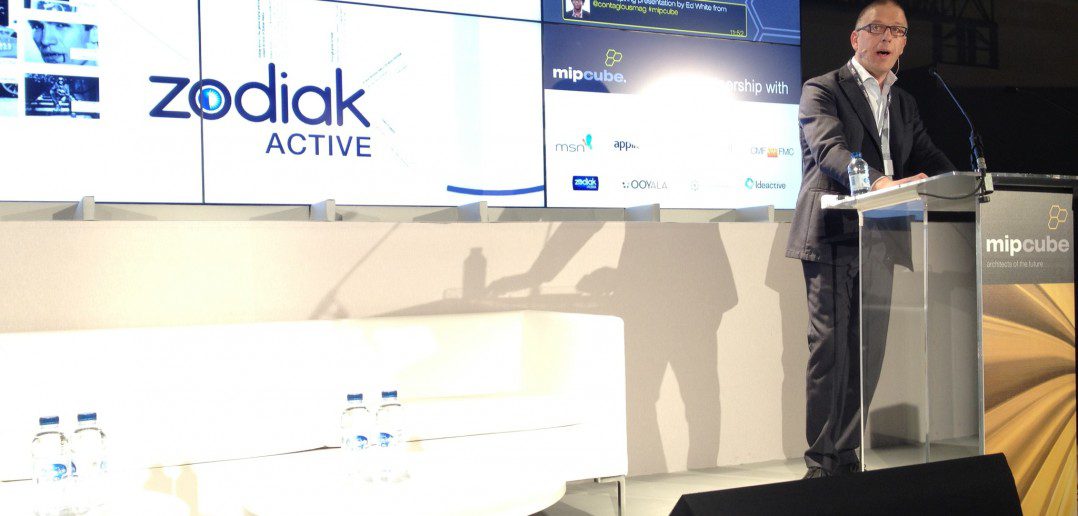[youtube]KVQOoesaDL8[/youtube]
Social TV has been the dominant theme at MIPCube this year so far, as broadcasters, producers and startups debate how the TV industry can make the most of the explosion in social media and mobile/tablet devices.
Zodiak Active’s COO Marco Franciosa gave his own views in a session this morning. The company works for the likes of Ferrari, Nike, Sony, the BBC, MTV and Sky, and has a front-seat view on social TV developments.
“Let’s take the term social TV and understand what we really mean,” he said. “It’s already become a cliche to say that TV has always been social, as we watch TV with family and friends and talk about shows we have seen… What is changing is not the TV, but the way in which we live socially.”
The conversation now happens on Facebook and Twitter, rather than around the coffee machine or watercooler at work the next day.
“We are multiplying the social effects on the TV,” said Franciosa. “Where we were connected with 30 people before, now we are connecting with thousands of people. And the audience can talk back to the show… We have to forget about passive audiences and consider an active world… It’s time to earn back the attention of our distracted audience.”
Franciosa also warned that there is a danger of losing focus on what users really want, as in the current fragmented scenario of social TV – no one standard has yet emerged in terms of the app or platform that people use to chat about the shows they are watching.
“We have to get back to basics and learn from the users,” he said, citing a study by Nielsen on how people use the second screen: they check emails, surf the web, visit social networks, and also maybe do show or advertiser-related actions.
Franciosa suggested that the “epiphany of back to basics” is following a show through its Twitter hashtag. He cited a survey conducted by Trendr. “85% of people who use social media while watching TV are using Twitter. The same survey told us that the figure for Facebook is just 7%“.
He moved on to discussing why social TV is so successful. “It’s natural, easy and fun. And there are a lot of users already there… And also it’s complementary to the show.”
He continued: “Finally, Twitter lets the audience be part of the whole social experience… They want to feel like a door is open for them, that the show is somehow listening to them. That needs to be our goal if you want to make successful social TV shows. We have to make sure the fans can interact with and talk about the show, and have a channel to do so.”
Franciosa also cited research showing that only 14% of TV viewers search for specific shows or channels, whereas 86% flick around to find something to watch. Social media is what’s helping that latter group find something to watch: their friends’ tweets and updates will guide them to one show over another.
Thus, the shows whose producers and broadcasters are putting most effort into social media will be in the best position to attract this audience of browsers.
Franciosa showed an example created by Zodiak for musical talk show Deejay, which will be shown on TV, online and on Facebook. The website pulls in tweets, lets people log in using Facebook, and lets people dedicate music videos to their friends. And the show’s host can ask viewers for real-time feedback at any point while on-air.
“We don’t need to have a crystal ball to predict the future. We just need to work to create the future. In a way, the future can be what we want to see,” said Franciosa to finish.




